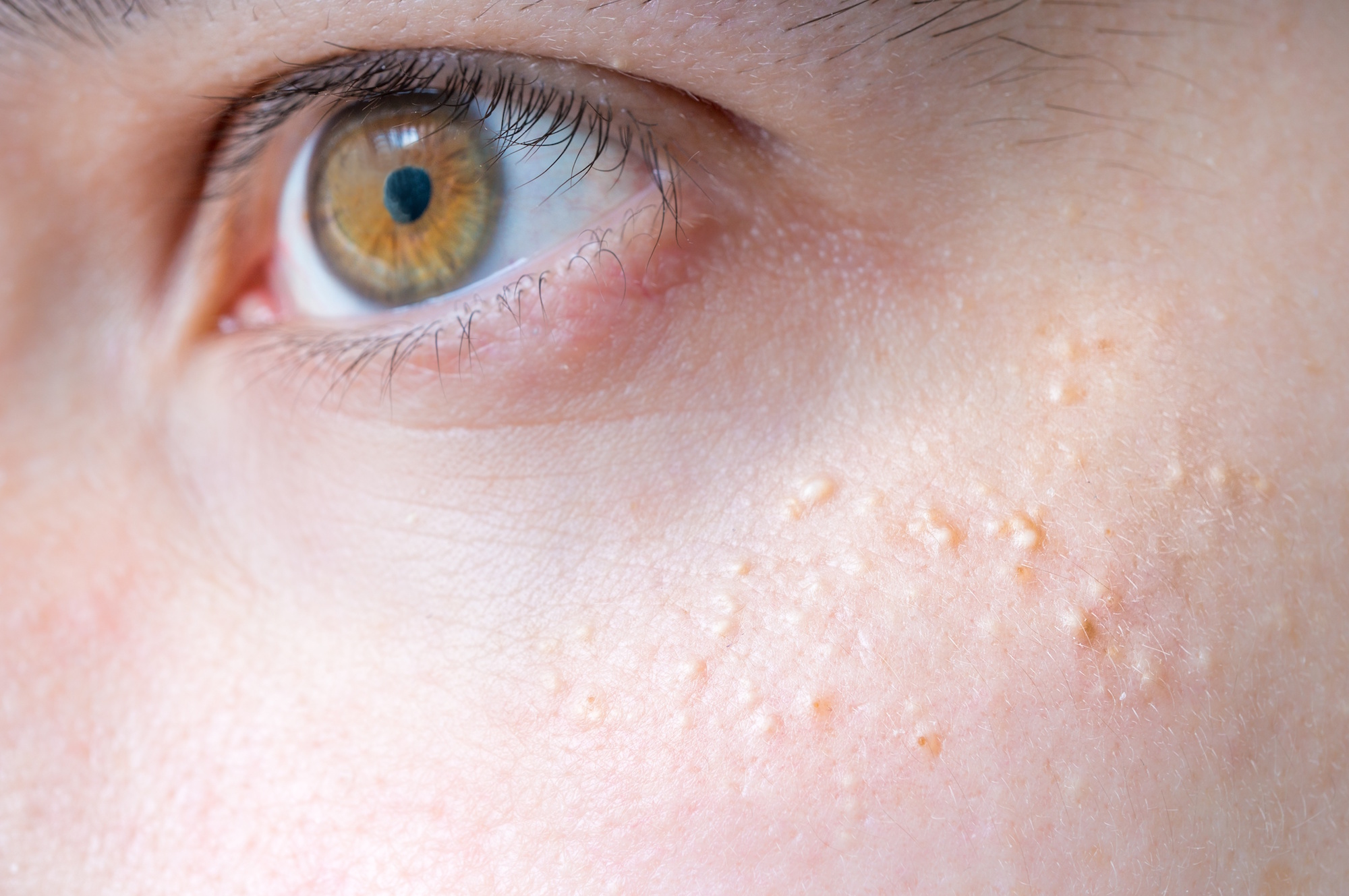 Milia, also called ‘milk spots’ or ‘oil seeds’, can be frustrating to tackle and may look a bit alarming, but these small pearly white cysts are mostly just a cosmetic annoyance.
Milia, also called ‘milk spots’ or ‘oil seeds’, can be frustrating to tackle and may look a bit alarming, but these small pearly white cysts are mostly just a cosmetic annoyance.
First of all, what are Milia?
Milia (singular ‘milium‘) are small keratin-filled cysts that often appear when a sweat gland is clogged or the skin has suffered some kind of trauma. They are typically found in clusters and usually appear just under the eyes, around the nose, and on the cheeks.
Who gets them?
“We always think of milia in babies, or commonly associated with newborns,” says Dr. Miriam Hanson, dermatologist in Austin, Texas. “The truth is, it’s possible for anyone to develop them at any age.” Ongoing milia is can rarely be associated with genetic disorders such as Gardner syndrome and basal cell nevus syndrome.
Why do you get them?
There are many possible reasons for developing milia. “Blockage of the eccrine sweat ducts in the skin is a common cause,” explains Dr. Kellie Reed, dermatologist and skin care expert at Sanova Dermatology. Development may also occur later in life from trauma such as thermal burns, dermabrasion, and blistering rashes, or it may be present soon after birth (called ‘neonatal milia’).
How do you treat them?
There is usually no treatment required for milia, except for cosmetic reasons. In these instances, milia can be removed by a physician. A professional dermatologist is required as they will have specialized knowledge of the area, and they may use a variety of approaches such as electrodesiccation (cautery), acne surgery, curettage, or cryotherapy. “In children, milia typically clear on their own within a few weeks, although they can persist for months,” Dr. Reed says.
Can you prevent them from appearing?
While there is no sure way to prevent milia from appearing, skin care treatments like exfoliation, retinoids, chemical peels and proper cleansing can reduce clogs in the skin and help reduce the occurrence of milia.
Contact Us
Not all bumps on the skin are benign. If you have a suspicious growth, make sure it is evaluated by a dermatologist. To learn more about milia, their treatment and the best skin care approaches for you, please contact us today.
